SOLD
1960-1970 Vintage Patch and Stitch Trimmed Cardigan Jacket Made From Irish Fisherman’s Oiled Sweater
アイルランド北西部のアラン諸島発祥という事になっているアランセーター、英仏海峡チャンネル諸島のガーンジー島あたりのガーンジーセーター、北欧のノルディックセーター、アイスランドのロピーセーターなど、海に出て船の上でさまざまな作業を行う必要のある漁師が発祥とされるセーターが北部ヨーロッパにはいくつもあります。
The Aran sweater is said to have originated in the Aran Islands in northwestern Ireland, the Guernsey sweater around Guernsey Island in the Channel Islands, the Nordic sweater in Scandinavia, the Lopie sweater in Iceland, and many other sweaters that originated with fishermen who had to go out to sea to perform various tasks on boats. There are a number of sweaters in northern Europe.
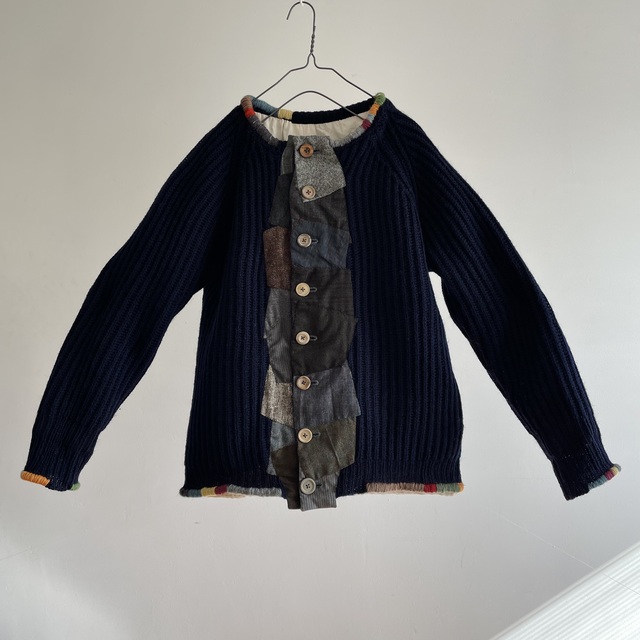
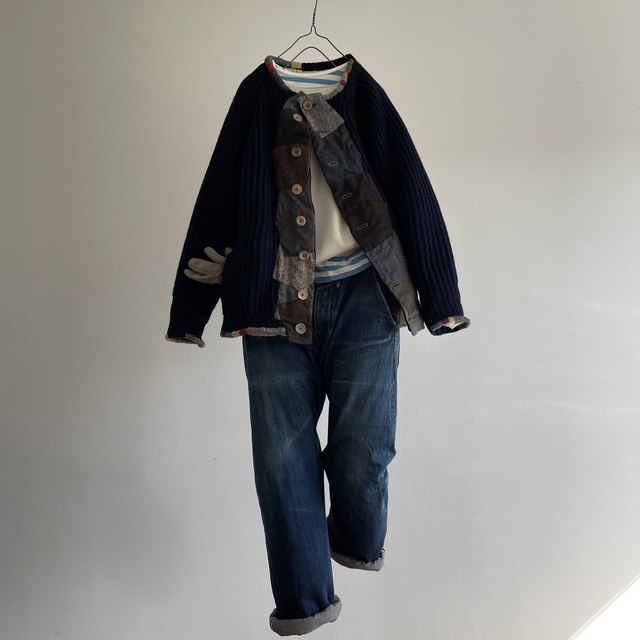
暖流の北大西洋海流のおかげで、かなりの高緯度地帯でありながら海が凍ることはないとはいえ、英国北部やアイルランド、スカンジナビアは寒冷で霧の多い厳しい気候の荒涼とした風景が続きます。産業は農業を産業にできるだけの収穫を阻む痩せた土壌でも生える草でも飼育が可能な牧羊と、周りを取り囲む海での漁業だけが主な産業でした。
Even though the warm North Atlantic Current keeps the seas from freezing, even at fairly high latitudes, northern Britain, Ireland, and Scandinavia are still bleak landscapes with cold, foggy, and harsh climates. The only major industries were sheep farming, which could be raised on grass that could grow even on the lean soil that prevented agriculture from yielding enough to make it an industry, and fishing in the sea that surrounded the area.
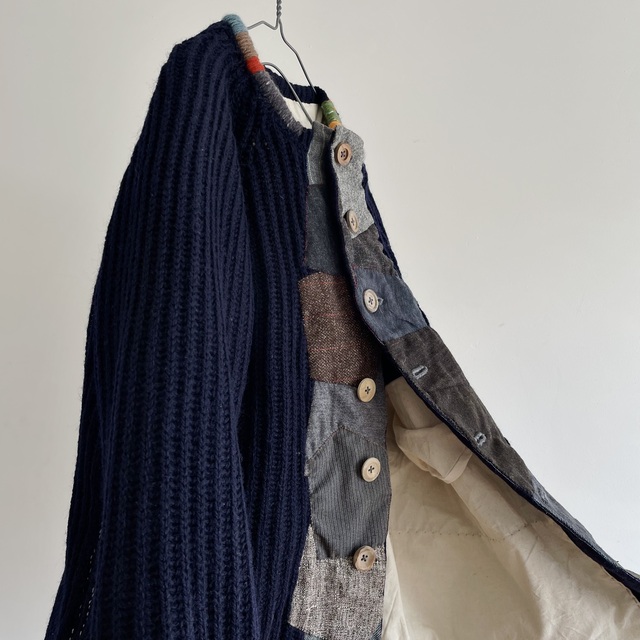
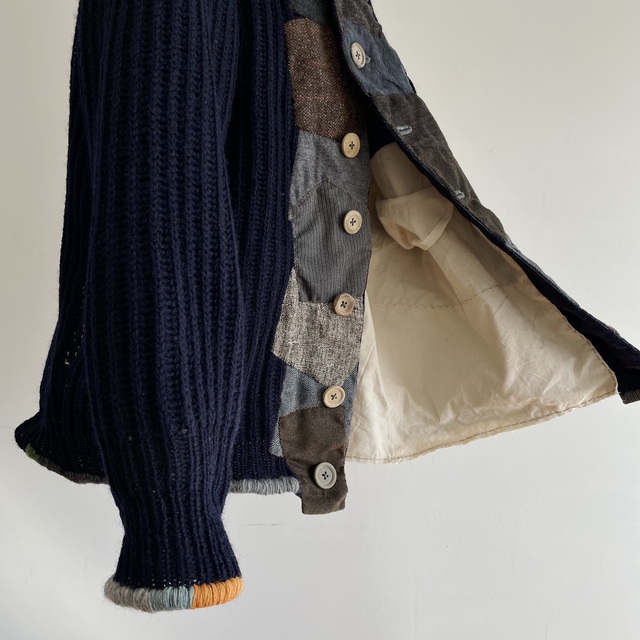
これらの地域に暮らす普通の人々が身に着ける物で自給出来たのは、この気候のなかでも育てられた亜麻(リネン)や麻(ヘンプ)と、羊の毛を利用した織物だけでした。真夏でも最高気温が17度程度という寒冷な気候では、1年を通して羊毛で作った衣服は欠かせないもので、着るものを自給するために家々がそれぞれ羊毛から糸を紡ぎ、自分達で着る物にする技術と伝統を育むことは自然な事でした。
The only clothing that ordinary people living in these regions were able to provide for themselves was linen and hemp, which could be grown in this climate, and textiles made from sheep’s wool. In a cold climate with a maximum temperature of 17 degrees Celsius even in mid-summer, clothing made from wool was indispensable throughout the year, and it was natural for each household to develop the skills and traditions to spin yarn from wool and make their own clothing in order to be self-sufficient in clothing.
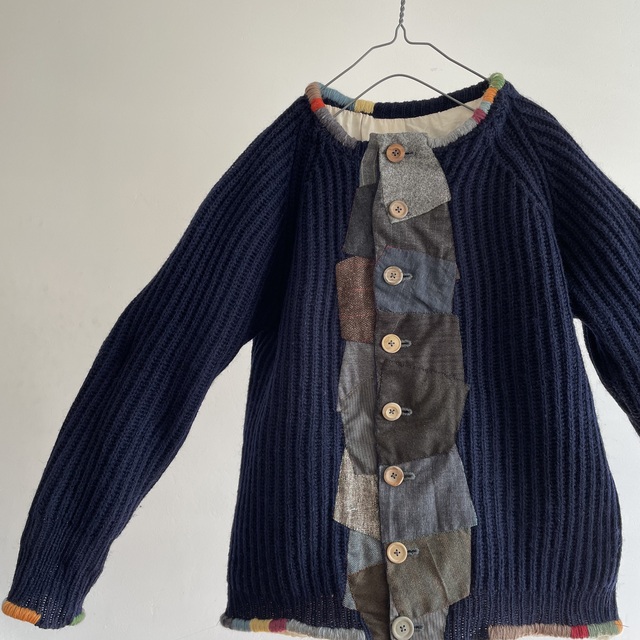
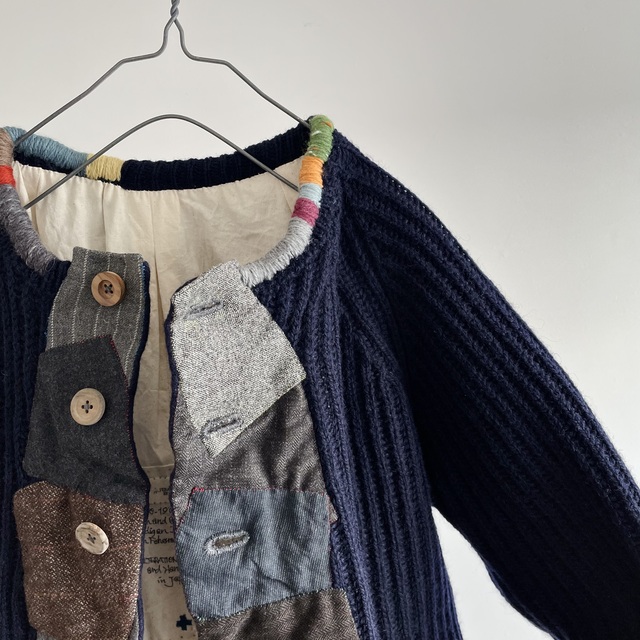
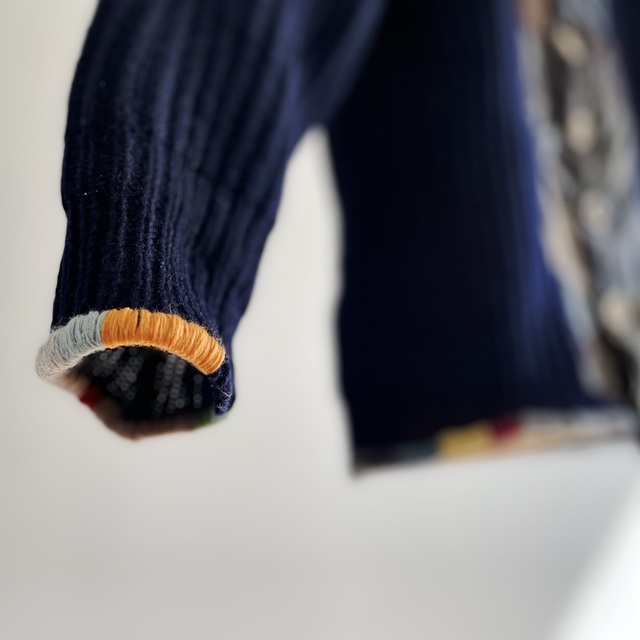
特にこの辺り沿岸部の唯一と言える産業の従事者である漁師達にとっては、厳しい海の自然条件から身を守るための仕事着が必要でした。水を弾き浸透させない為にも羊の毛の油分を脱いていない原毛を使い、暖かさを保ちつつ、嵩張らず着脱が簡単で、お金をかけずに(家で作れる)手に入る防寒着が、自分たちの手で編んだ手編みのセーターでした。
In particular, fishermen, who are the only workers of the industry in the coastal areas around here, needed work clothes to protect themselves from the harsh natural conditions of the sea.
The hand-knitted sweaters were made from raw sheep’s wool that did not lose its oil content in order to repel water and keep it from penetrating, and were warm, not bulky, easy to put on and take off, and could be made at home without spending a fortune.
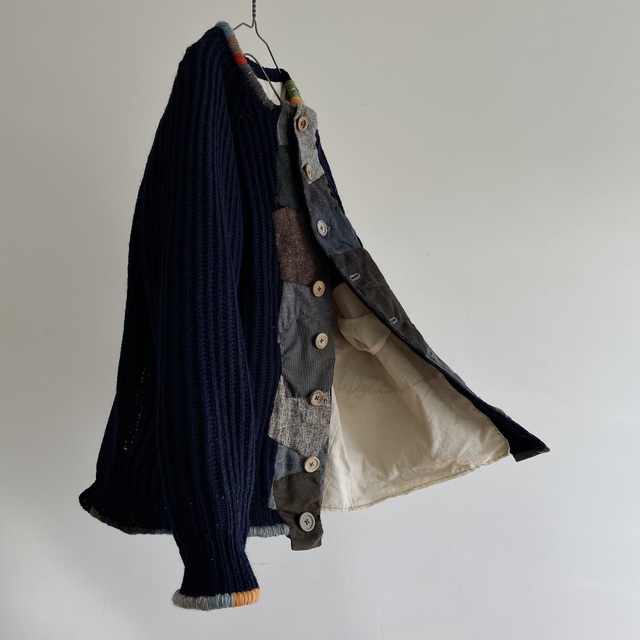
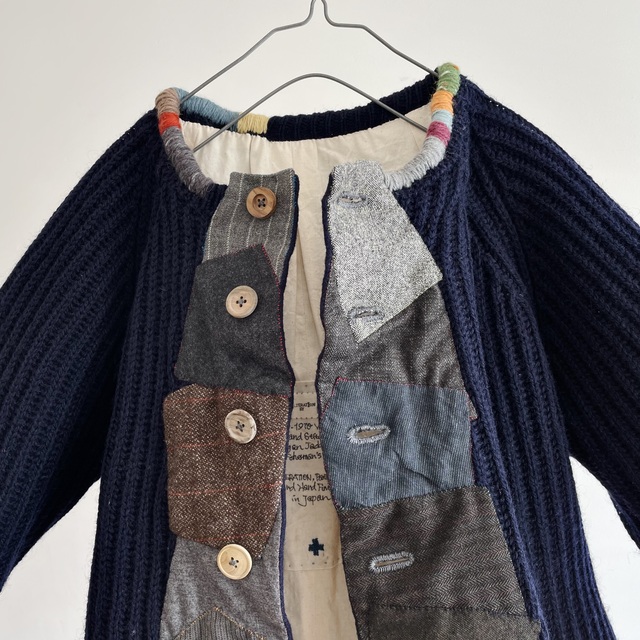
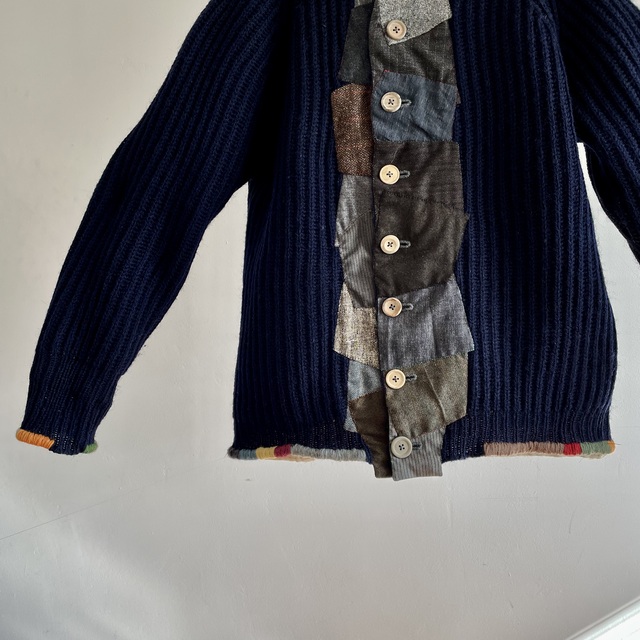
やがてこういった機能性の価値と衣類としての存在感は、広く漁師以外の人々にも求められるようになっていきました。英国やアイルランドでは、1930年頃から、手編みの生産性の低さを手動編み機に変更することで軽減し、機械編みでは限界のあった編み地の厚みを畦編みで補い、未脱脂ウールのような撥水性はラノリン油脂で補完するなど、いわゆる“フィッシャーマンズニット”の産業化版が作られました。
Eventually, the value of such functionality and its presence as clothing came to be widely sought by people other than fishermen. In England and Ireland, from around 1930, the low productivity of hand knitting was reduced by switching to manual knitting machines, the thickness of the knitted fabric, which was limited by machine knitting, was compensated by knitting between the legs, and the water repellency of unskimmed wool was supplemented by lanolin oil and fat, etc., in so-called ” An industrialized version of the so-called “fisherman’s knit” was created.
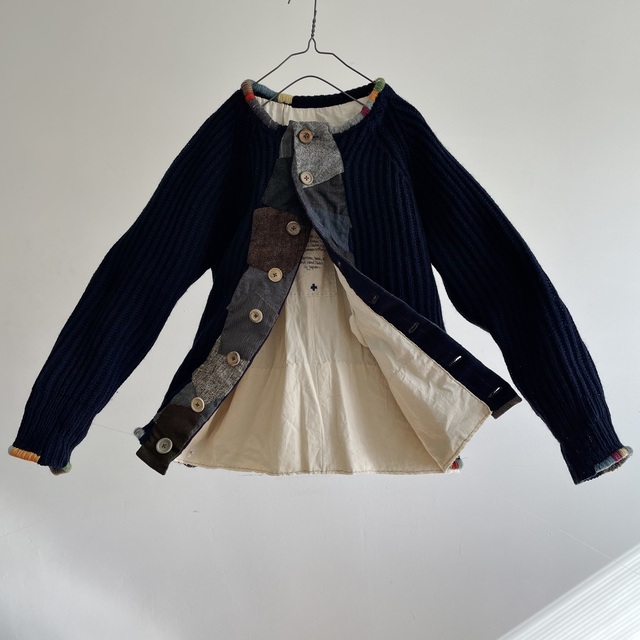
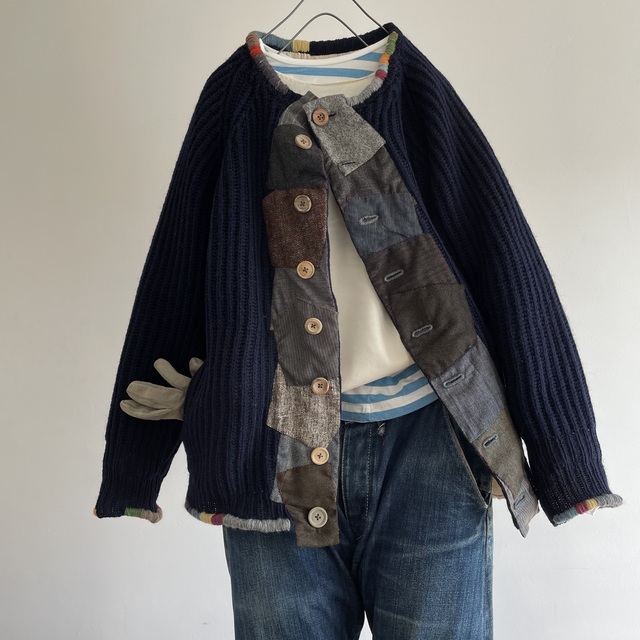
これらは第2次世界大戦での英国軍のコマンドセーターのベースとなり、戦争終了後にはそのノウハウとコンセプトはアイルランドのBridsdeelや英国のpeter stormなどに引き継がれ、“オイルドセーター”という名称でも呼ばれました。
These became the basis for British commando sweaters in World War II, and after the war the know-how and concept was taken over by Bridsdeel of Ireland and Peter Storm of England, who called them “oiled sweaters”. It was also called “oiled sweater”.
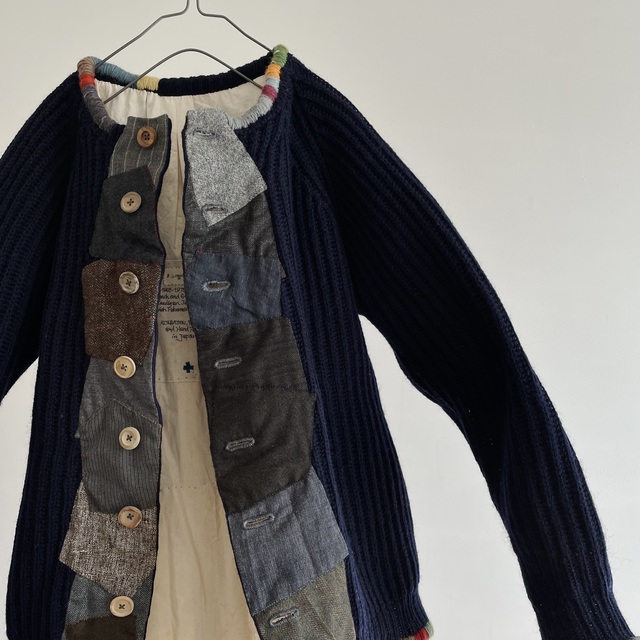
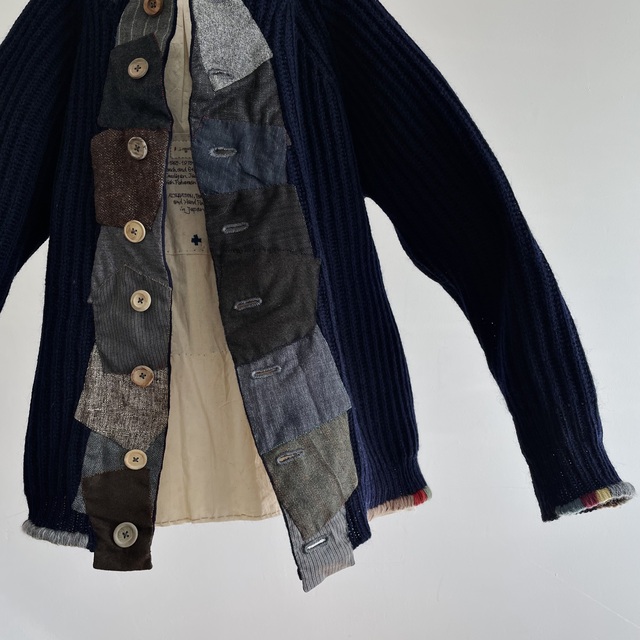
このような背景の中で作られた、1960年台アイルランド産の畦編みのフィッシャーマンズニットをALTERATIONしたジャケットです。
This jacket was made in this background, and is an ALTERATION of Fisherman’s knit between the knots made in Ireland in the 1960’s. The jacket is made in the same way as the Fisherman’s knit of the 1960’s.
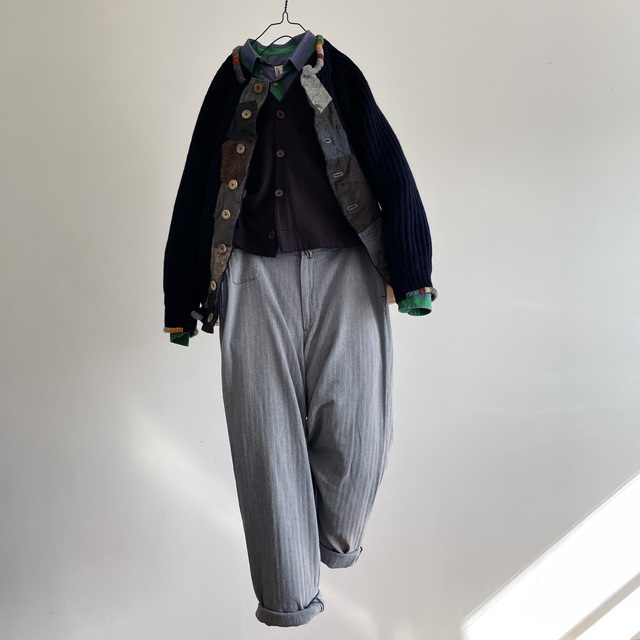
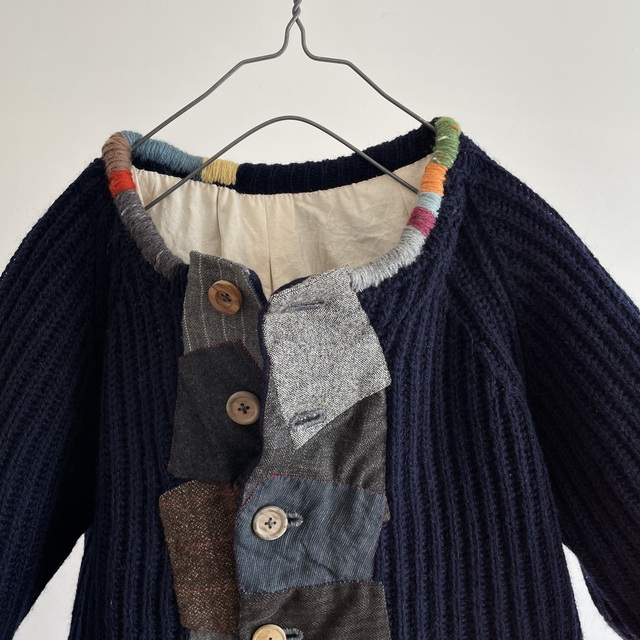
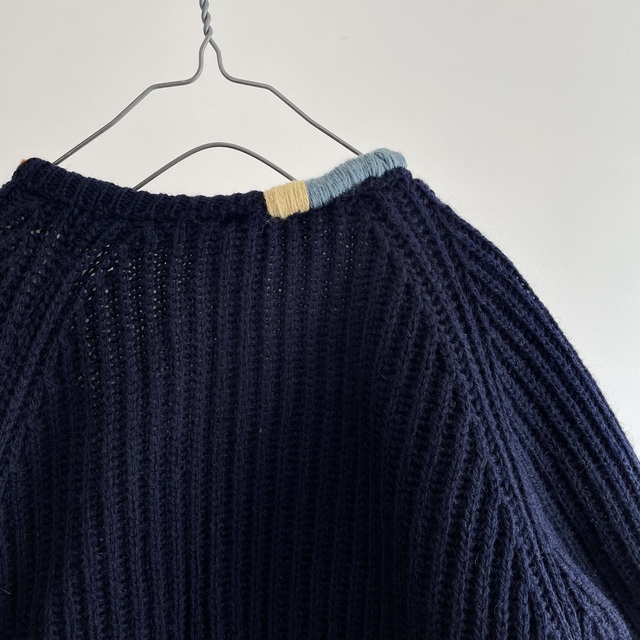
中太の糸で両畦編みされたボリュームのある厚みの編み地のニットを改新したジャケットです。含浸されていたオイル分は経年と長年の着用のと洗浄の繰り返しでも残り、柔らかで枯れた風合いと相まって独自の風合いを作り出しています。
This jacket is a knitted jacket knitted with a thick, voluminous knitted fabric knitted between two pairs of knitted fabrics with medium-thick yarns. The impregnated oil content remains even after years of wear and repeated washing, creating a unique texture combined with a soft and withered look.
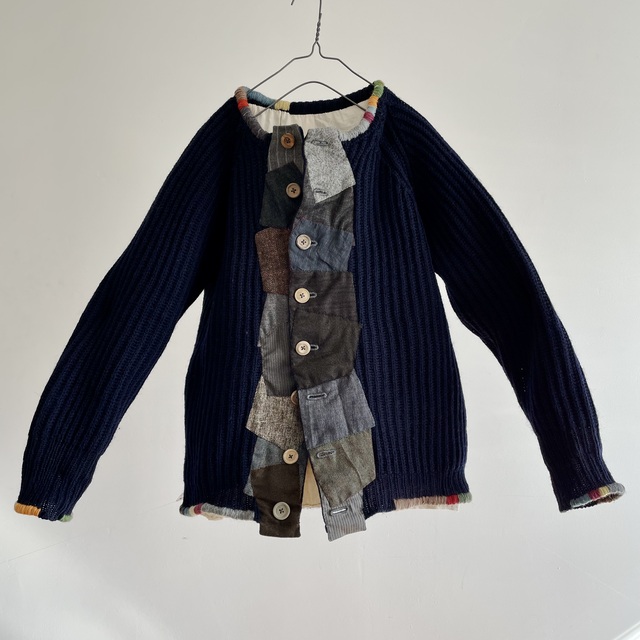
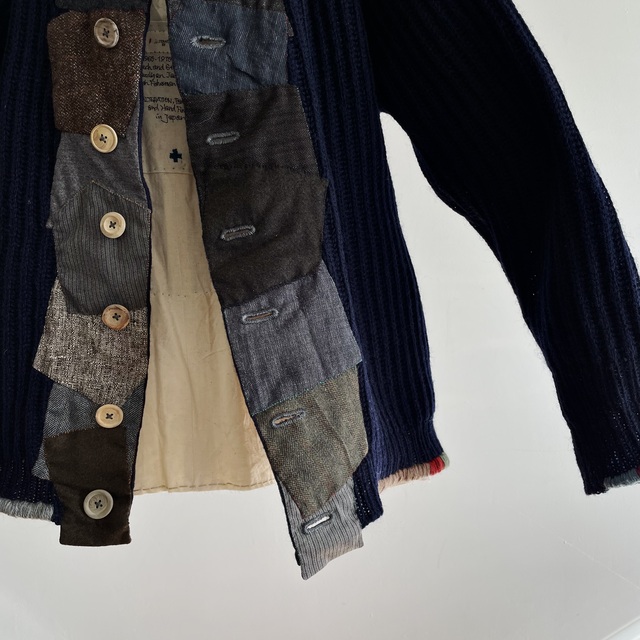
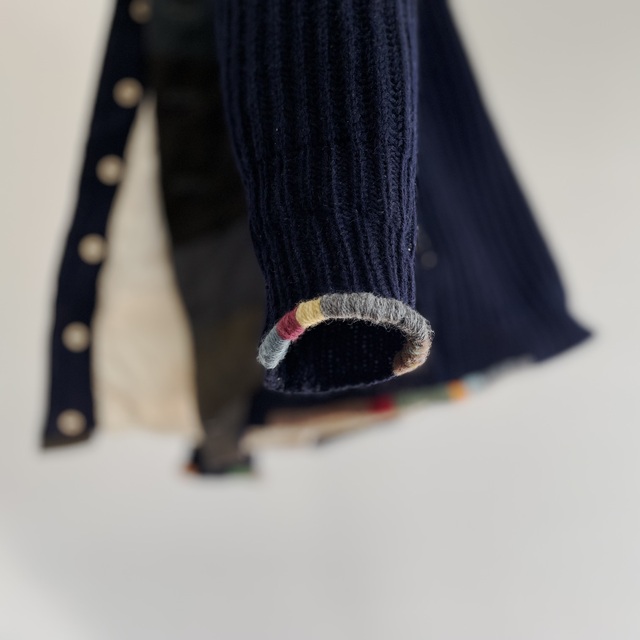
アウターとしての防寒性やポケットなどの機能、着やすさを高めるために内側につけたライニング。ラスティックなコットンブロードは、適度な張りとシワ感が有り、インドで織られた素朴な糸の表情が魅力です。
Lining attached to the inside to enhance warmth as outerwear, functionality such as pockets, and ease of wear. Rustic cotton broadcloth has a moderate tension and wrinkle, and the rustic look of the yarn woven in India is appealing.
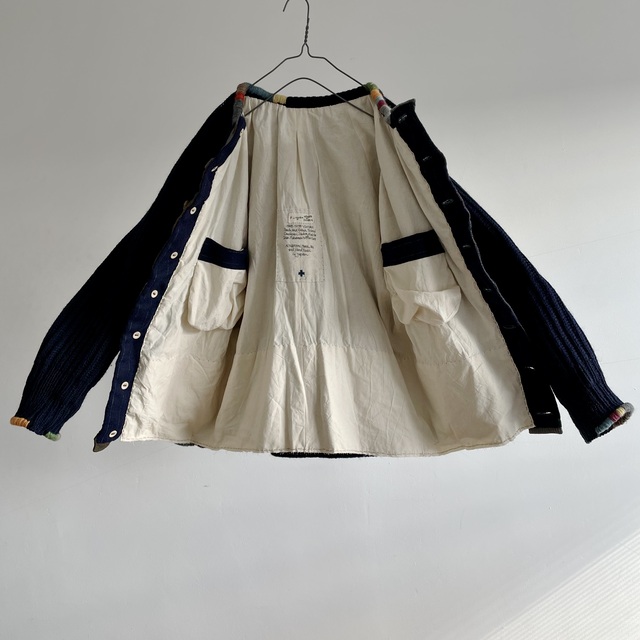
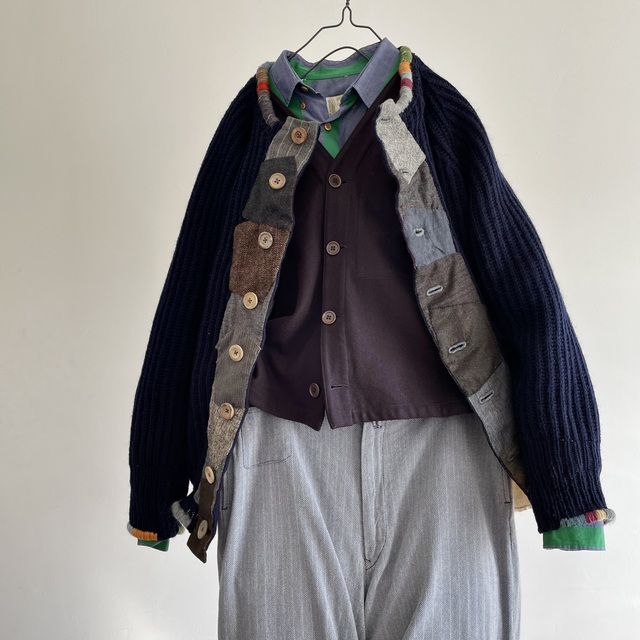
ジャケットの機能を高める丸いフォルムと膨らみが味のある内ポケット。味わいと清潔感を与えるコントラスト。
Tasteful inner pockets with a rounded form and bulge that enhance the functionality of the jacket. Contrasts that give a sense of taste and cleanliness.
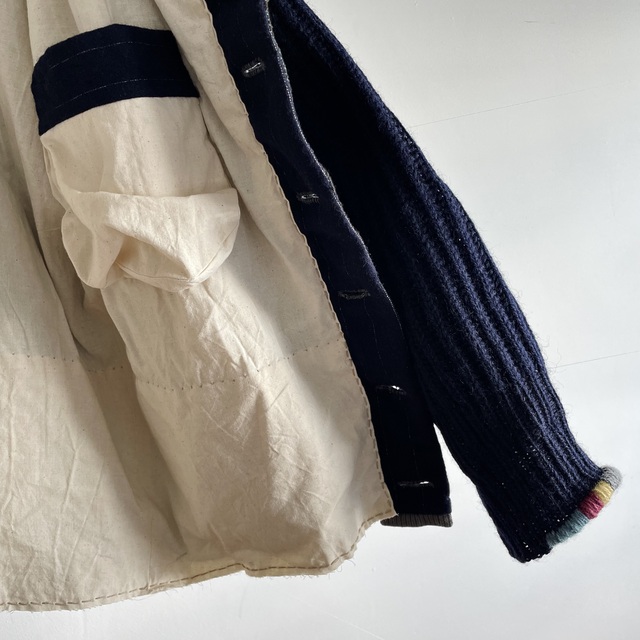
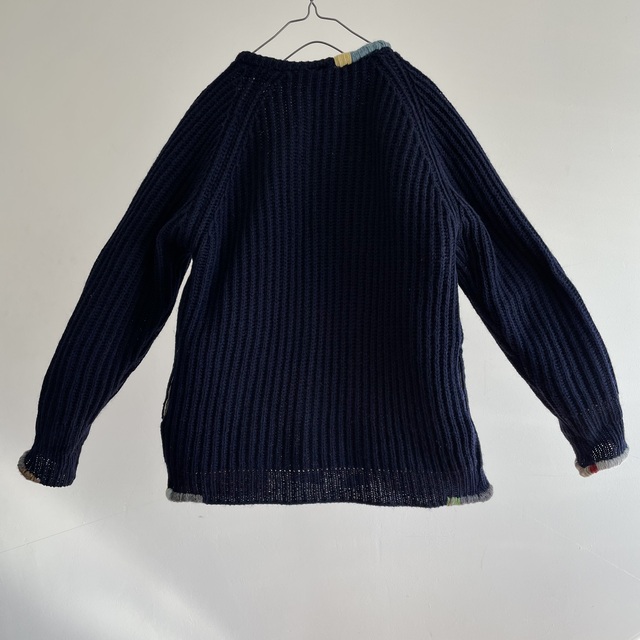
ライニングを留め付けたvintageの太いリネンコード。手仕事ゆえのステッチの意図せぬ自然な乱れが生むリズム。
Vintage thick linen cords fastened to the lining. The rhythm created by the unintentional and natural disorder of the stitches due to the handwork.
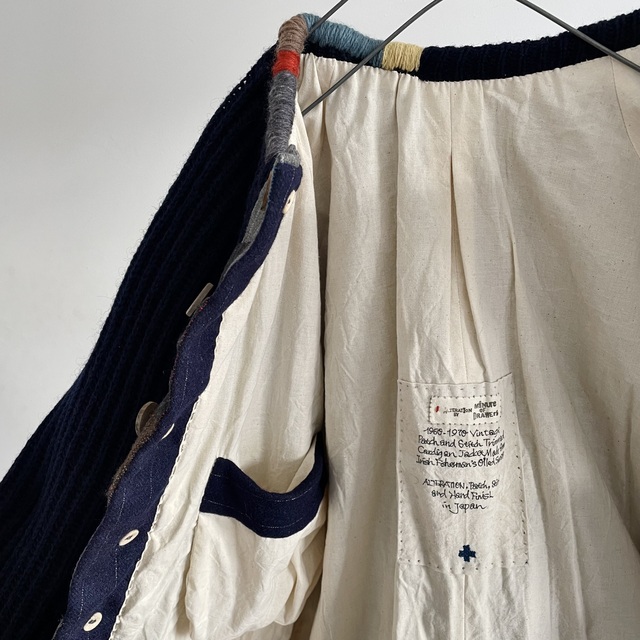
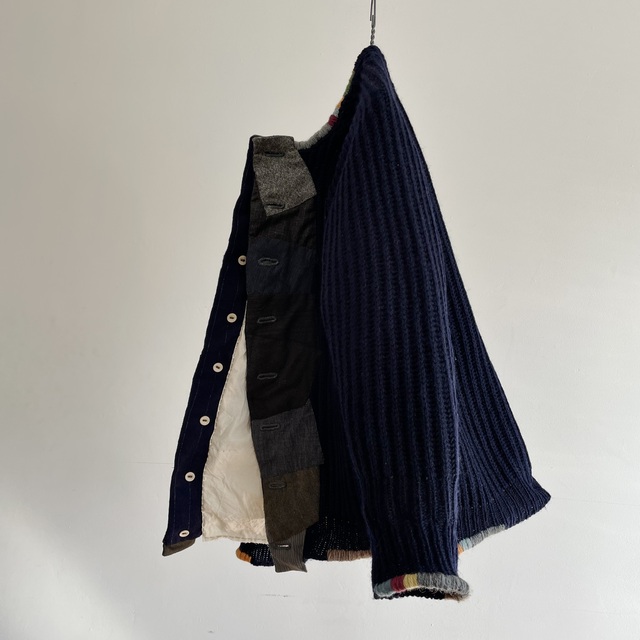
ニットの伸び縮みする良さと、柔らかさを邪魔しないために、ライニングの裾はとめずに浮かせた状態。そのライニングのカットされたヘムで遊ぶ糸が、印象を軽やかに。
The hem of the lining is left floating without being fastened in order not to disturb the stretchiness and softness of the knit. The threads that play with the cut hems of the lining give a light impression.
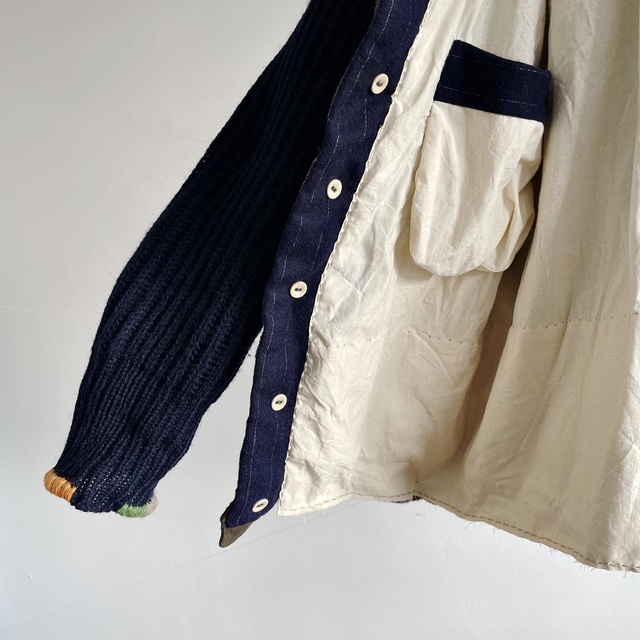
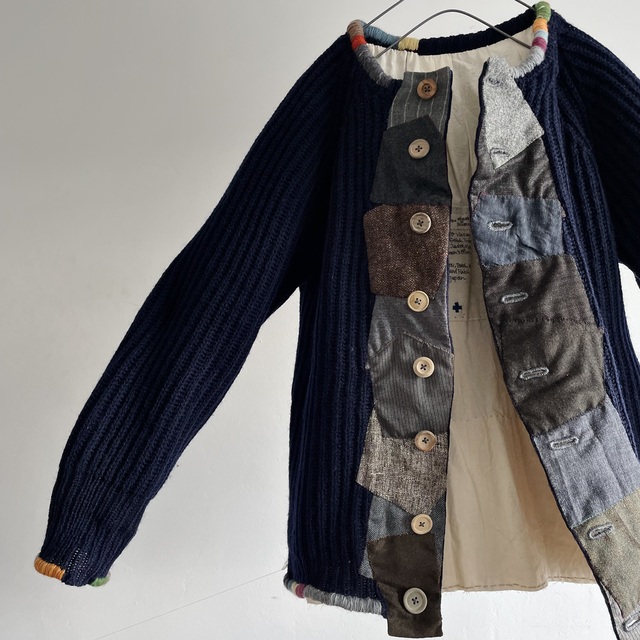
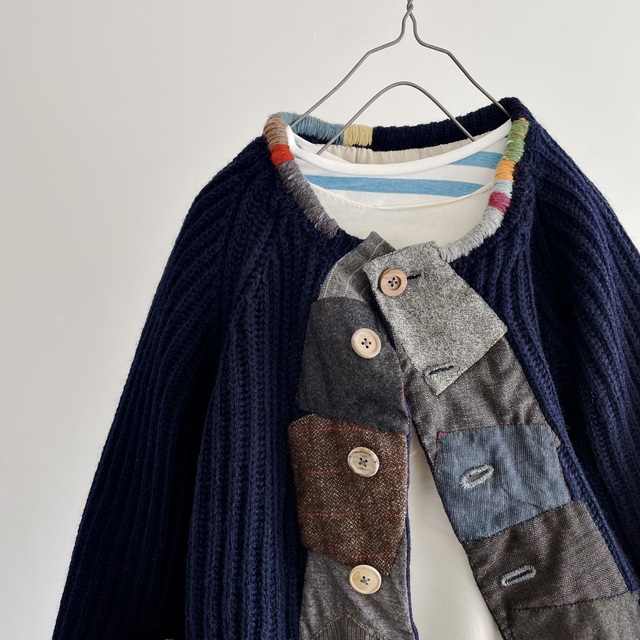
アウターとしての機能には必要なアウトポケット。サイドのリンキングを開き、両サイドにポケットを作りました。
ポケットの周りを囲むのは、ポケットの袋布がはみ出さないように抑えたリネンのハンドステッチです。
Out pockets are necessary for outerwear functionality. The side linkings are opened to create pockets on both sides.
Surrounding the pockets is hand-stitched linen that is held back so that the pocket bag cloth does not protrude.
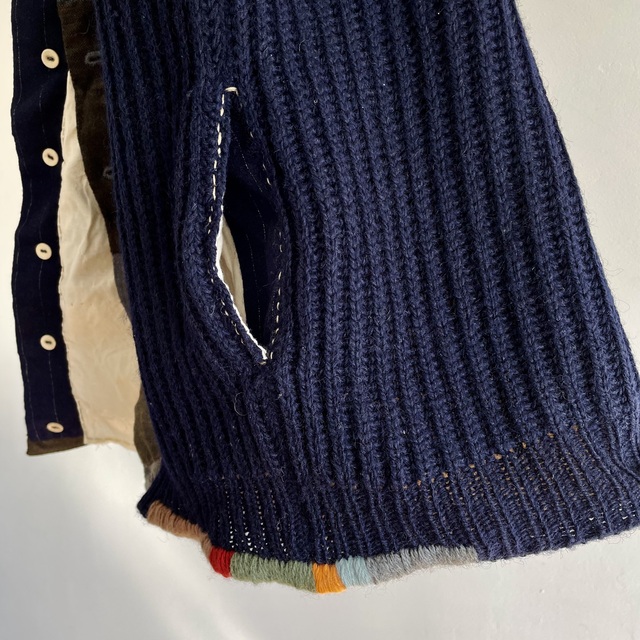
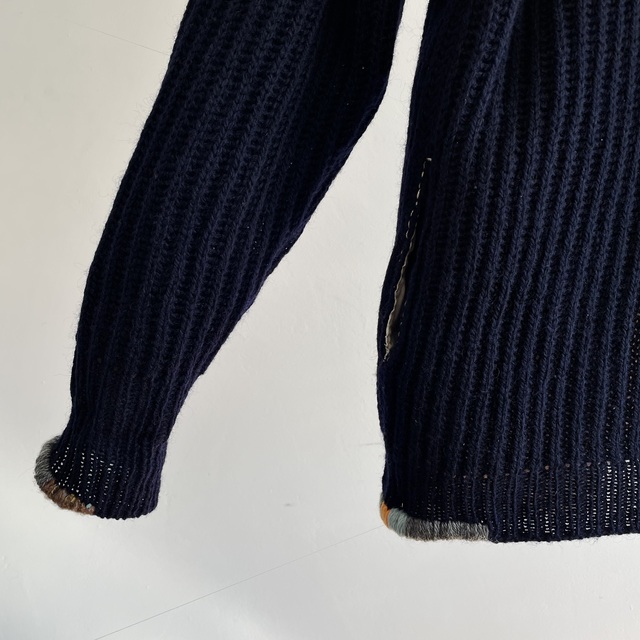
プルオーバーのニットの前身頃をカットし、ウールフランネル生地でプラケットを作り、前開きに変更したニットジャケットです。
This knit jacket is made by cutting the front of a pullover knit, making a placket from wool flannel fabric, and changing it to a front opening.
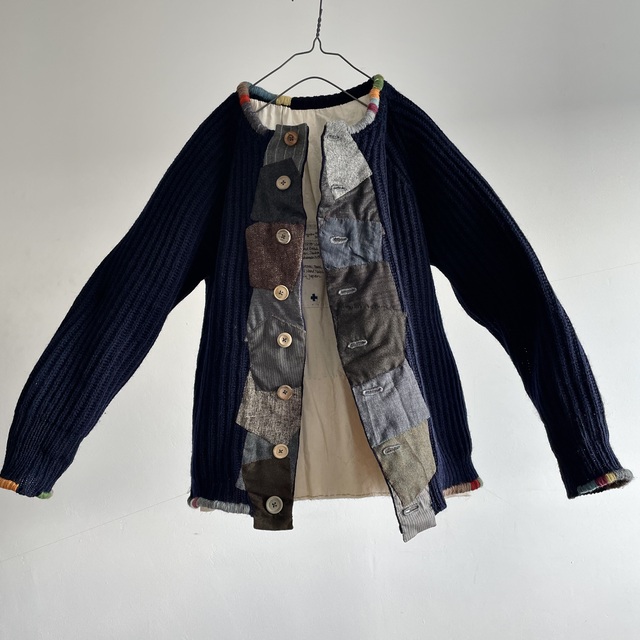
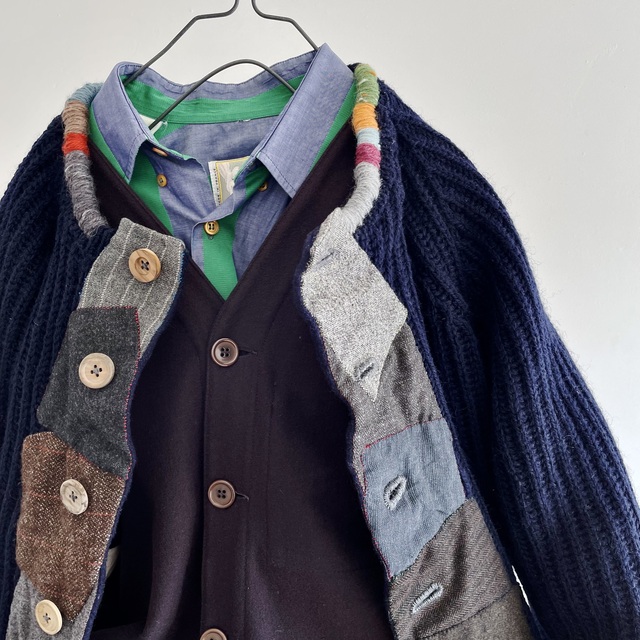
プラケット部分にはフランスや英国のvintageから採った16種の生地をハンドパッチ。
The placket is hand-patched with 16 different fabrics from French and English vintage.
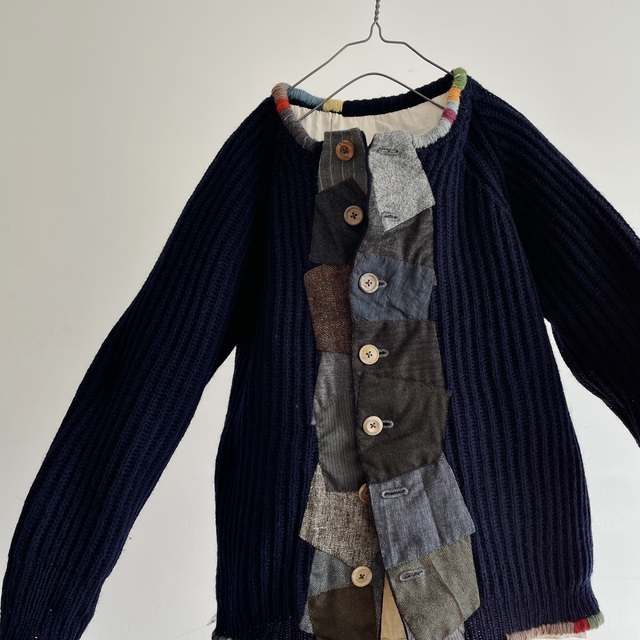
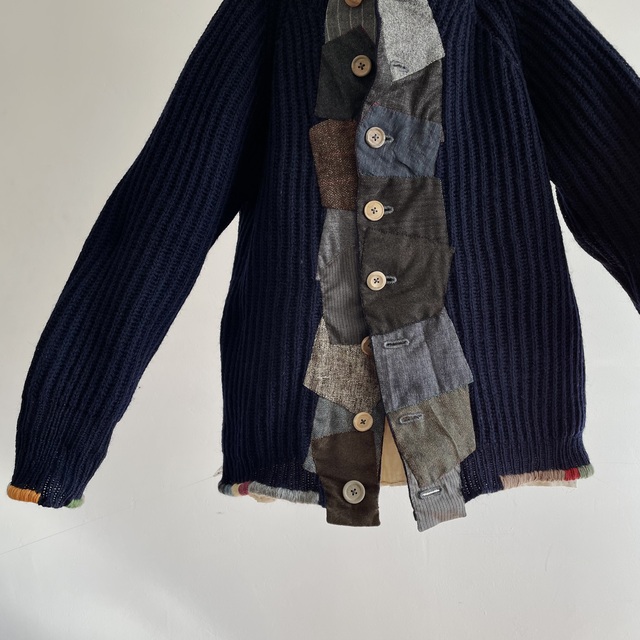
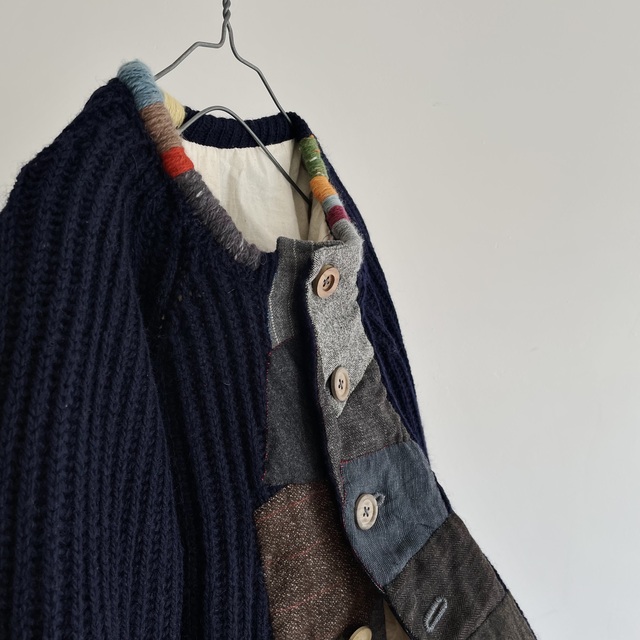
控えめに色を主張する糸を使って、1-1.5mmの細かなステッチで縫い上げたpatch。ハンドパッチによく用いられる端部が切り放しの生地の使い方や、刺し子の手法に見られる、生地の色に頓着しない太い色糸の大ぶりなステッチとは、全く違う方法と仕上がりです。
This patch is stitched with fine stitches of 1-1.5mm using threads that discreetly assert their color.
This is a completely different method and finish from the use of fabric with cut edges often used for hand patches, or the large stitches with thick colored threads that do not care about the color of the fabric, as seen in the sashiko technique.
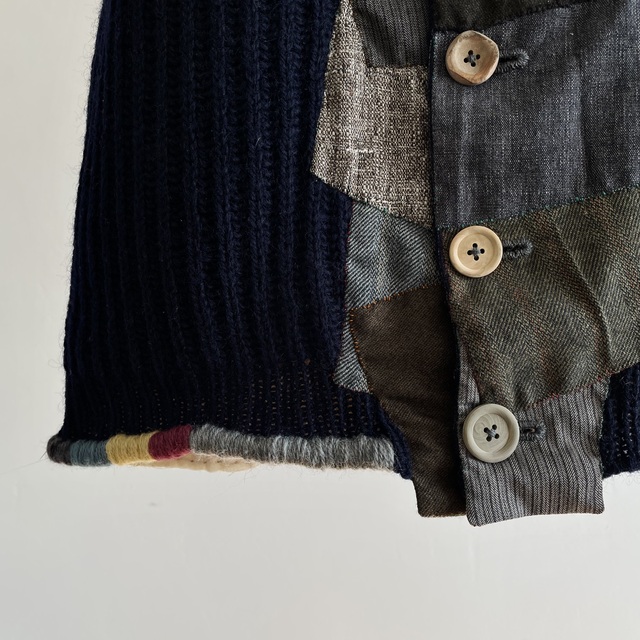
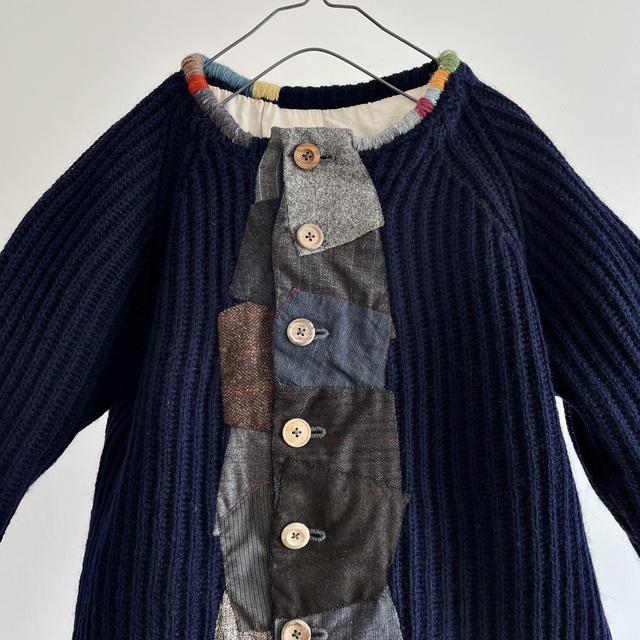
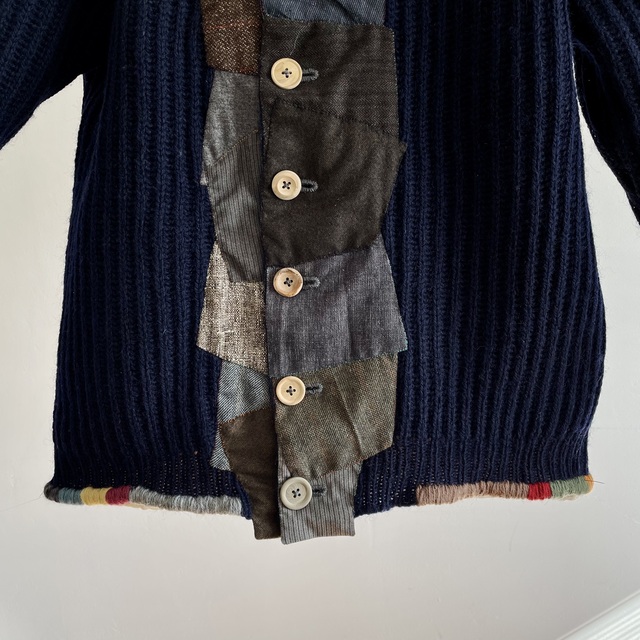
ボタンはフランスと英国のvintageから、ランダムに選んだウッドボタンです。素材の木の、水分や埃や長い年月を経た事で変化した枯れた色合いと風合いは、趣のある表情を持っています。
The buttons are wood buttons randomly selected from French and English vintage. The dead color and texture of the wood, which has been changed by moisture, dust, and long time passing, has an atmospheric look.
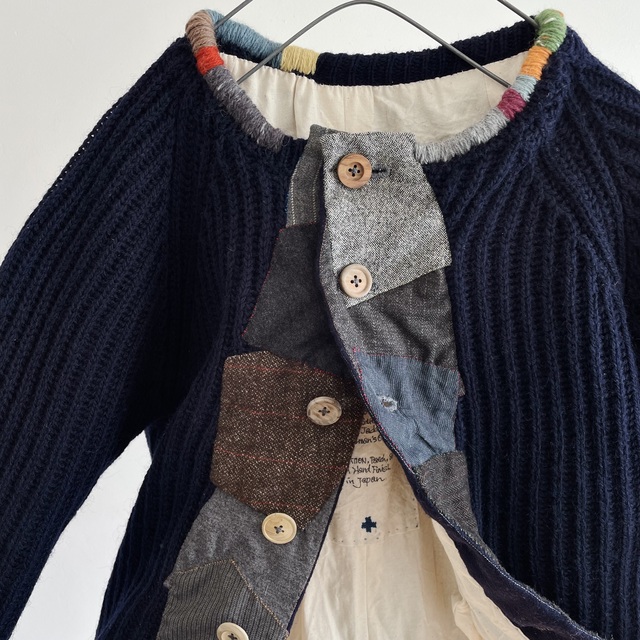
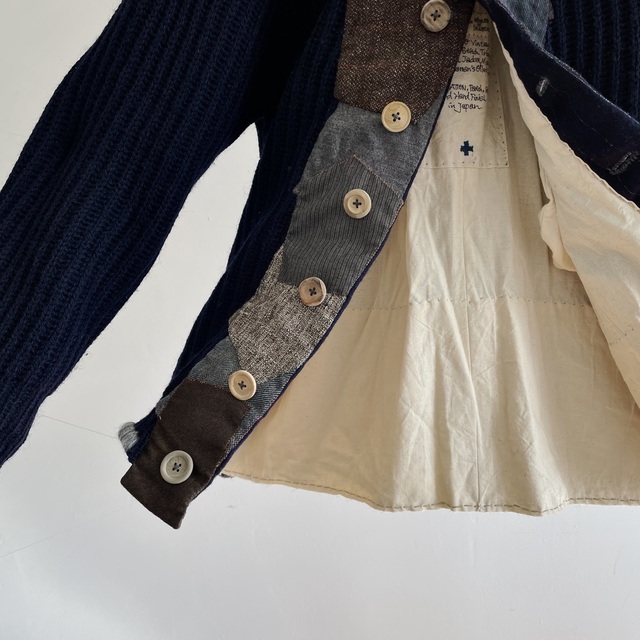
えり、袖口、裾をカラフルに彩るwrap over stitch。
Colorful wrap over stitching at the neck, cuffs, and hem.
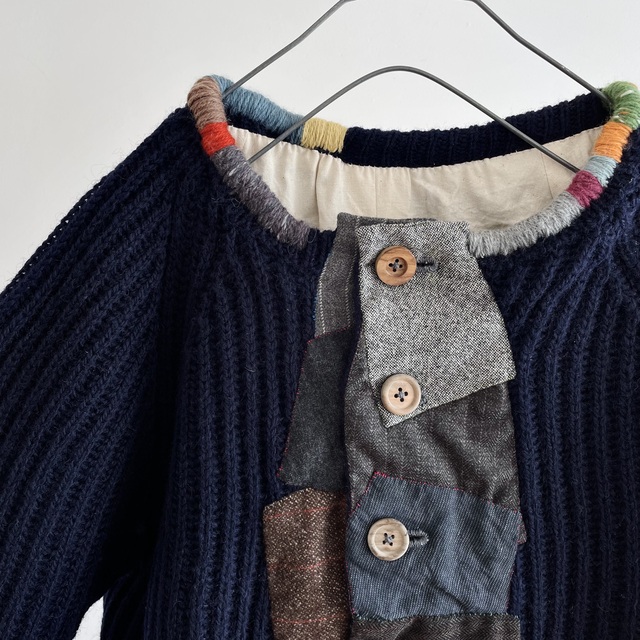
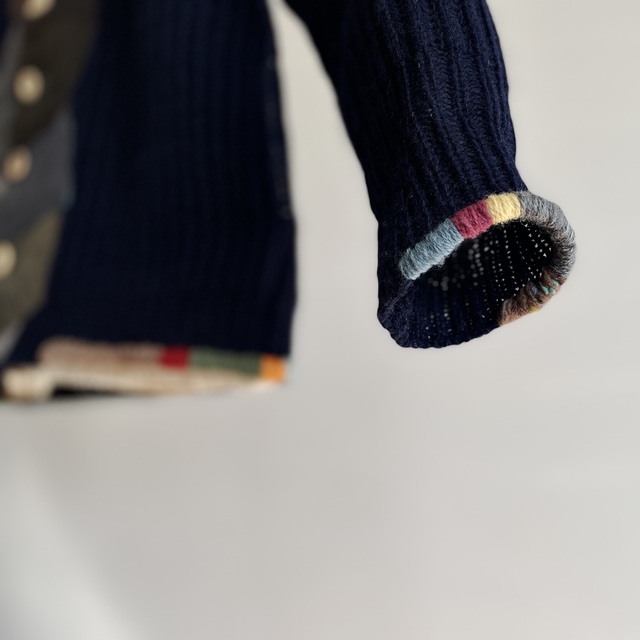
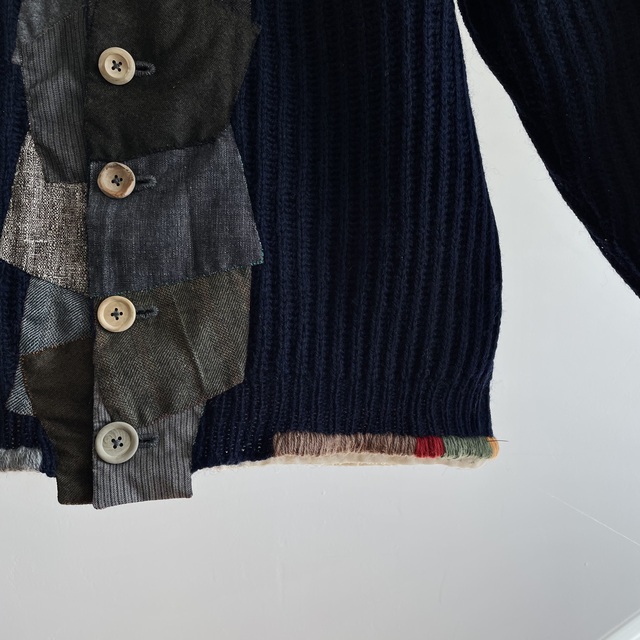
古いだけ、新しいだけでは、出来ないことができる服。
Clothing that can do what just old or just new cannot do.

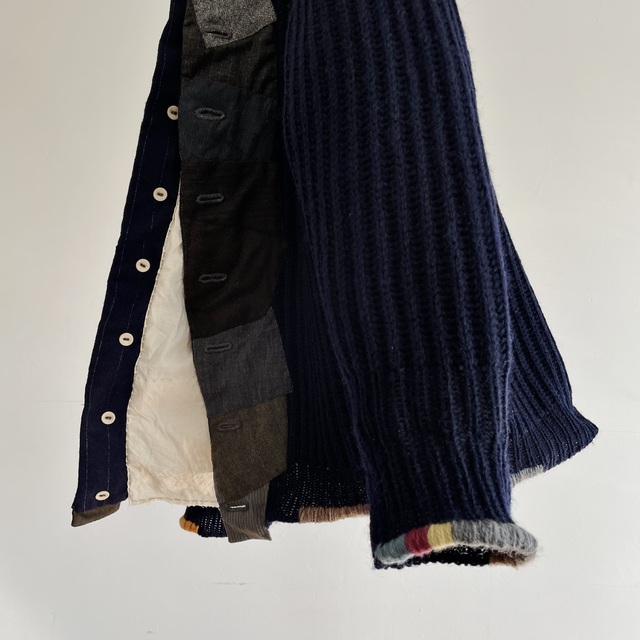
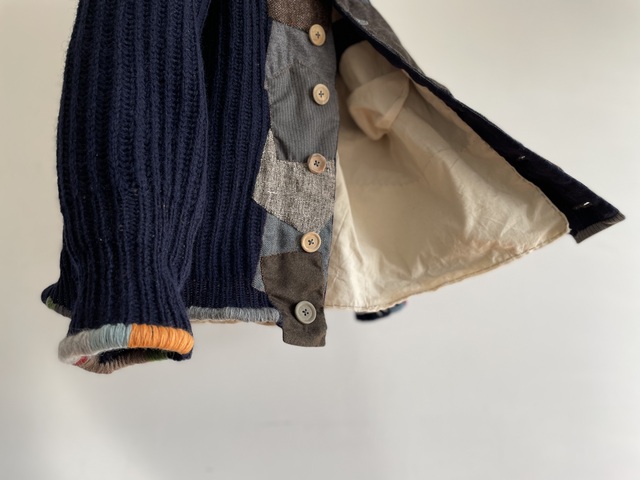
サイズ 2
裄丈 = 85cm (ラグランスリーブ=肩幅50cm 袖丈55 cm 相当)
バスト= 56cm(脇下)
着丈 = 64cm
アイルランド/日本製
表地 = Oiled Irish Wool Yarn / Wool100%
ライナー = Indian Rustic Cotton Broad Cloth / Cotton 100%
ボタン = Vintage Wood Button (Random Choice)
& Antique Fabric Covered Button
STOREへのリンク
1960-1970 Vintage Patch and Stitch Trimmed Cardigan Jacket Made From Irish Fisherman’s Oiled Sweater
[ALTERATION By Manure of Drawers] SOLD

